The AHS Blog

Time symbols in St John’s Co-Cathedral, Malta
This post was written by Peter de Clercq
As he knows that I am interested in horology on gravestones (see my earlier blog ‘Time symbols in cemeteries’ posted in October last year), Anthony Turner kindly sent me a few photos taken during a recent visit to Malta.
In St John’s Co-Cathedral in Valetta, the floors are entirely paved with inlaid marble tombstones of the knights of St John. They were all made following original designs and composed of coloured inlaid marble. They date from the early seventeenth century to the late eighteenth century.
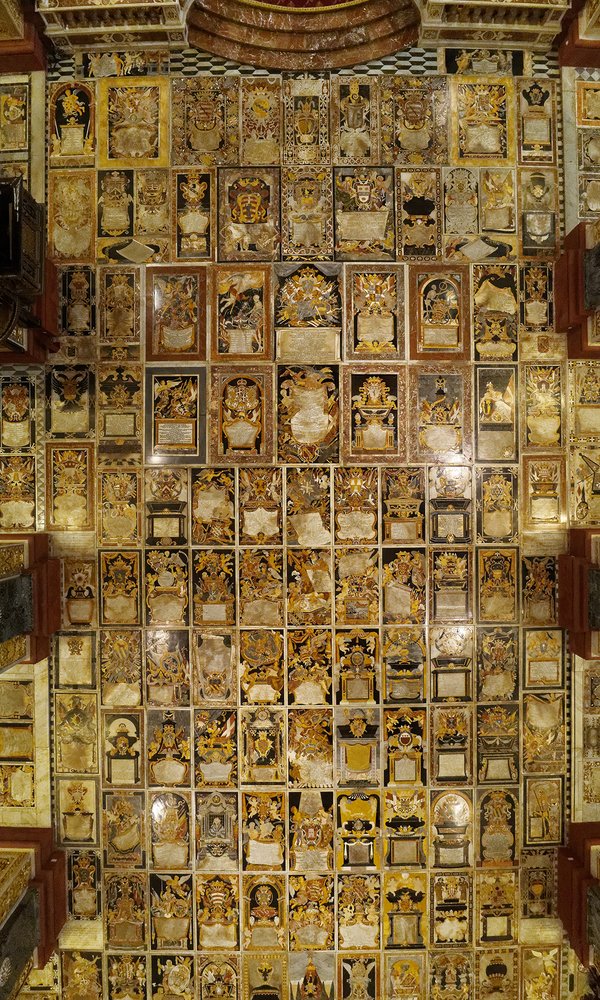
The in total 405 tombstones and monuments, of which 154 are in the main nave, are all illustrated on the wonderful website of the Co-Cathedral. There we learn that they commemorate some of the most illustrious knights of the Order. Several of them were members of powerful aristocratic families of Europe. They were grand priors, admirals and bailiffs, amongst others, and were often referred to as Most Illustrious Lord Brother Illustrissimus Dominus Frater.
The Latin epitaphs describe the virtues of the individual knight. Each tombstone is charged with messages of triumph, fame, victory and death. Symbols, both ecclesiastical and profane, are used in a vibrant visual language of colour and design.
One of the most popular symbols is the image of death represented by a skeleton, often with a sickle and an hourglass, and occasionally a clock or clock dial, all signifying the passage of time. Here are some striking examples.
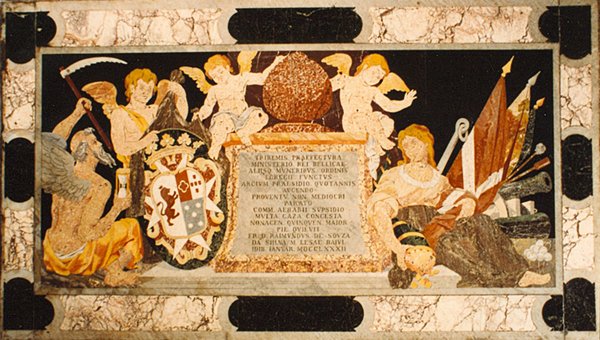
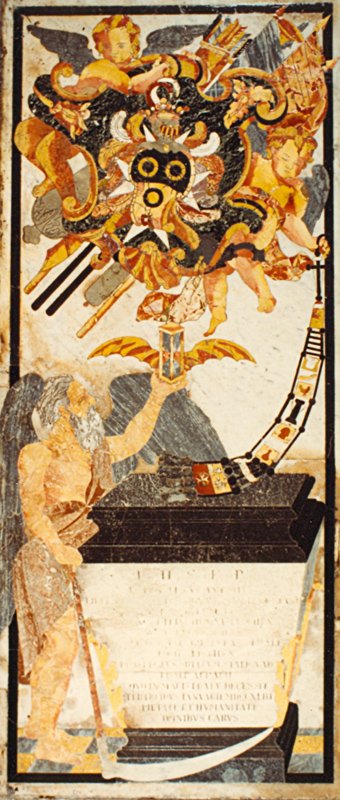
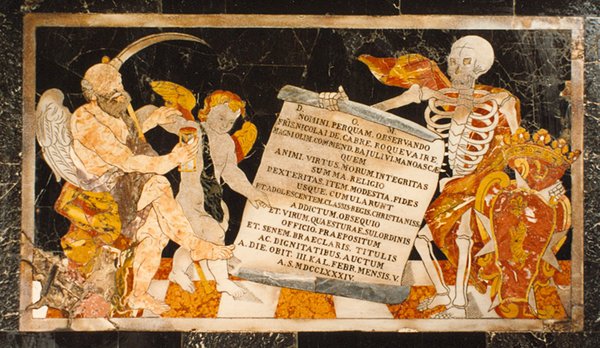
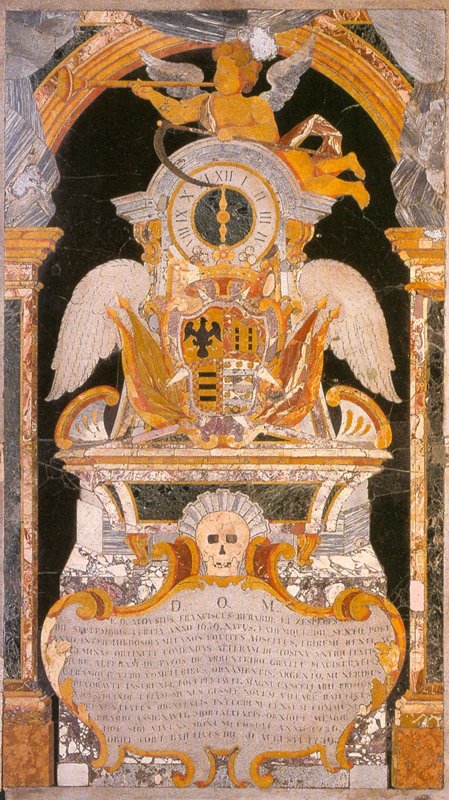

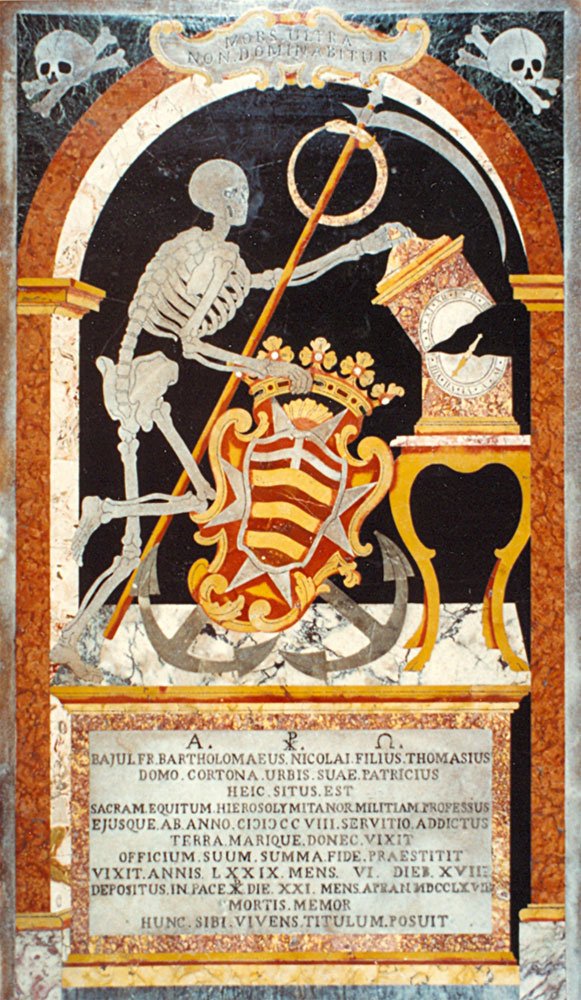
If you ever have the chance to visit Malta, do not miss St John’s Co-Cathedral. Anthony assures me it is quite spectacular.
All photos reproduced here courtesy of St John’s Co-Cathedral.
Stop all the clocks – a murderous take on the subject
This post was written by James Nye
Albert Johnson Walker, a Canadian, was born in 1946. In the 1980s, he defrauded his clients of millions of Canadian dollars. He abandoned most of his family and moved to Europe, ending up in Harrogate, Yorkshire. In 1993, he was charged in Canada, in absentia, with 18 counts of fraud, theft and money laundering. In time he became one of Canada's most wanted criminals.
Covering his tracks, Walker changed his name to David Davis, and set up a new business with a television repairman called Ronald Joseph Platt. Back in 1967, Platt, a 22-year-old Englishman in the Army, bought a Rolex Oyster Perpetual in Osnabruck, Germany, serial number 154402.

Fast forward to the 1990s again, and Platt ran out of money. Walker suggested emigration to Canada and a new life. Walker bankrolled Platt’s trip, but claimed he needed Platt's driver's licence and birth certificate to keep the UK business running. Once Platt was off the scene, Walker assumed his identity. So, he’d started as Walker, changed to Davis, and now he was Platt.
The real Platt ran out of money in Canada and returned to England in 1995, inconveniently for Walker (now calling himself Platt). Walker took Platt on a fishing trip on 20 July 1996 where he probably knocked him out with a heavy blow to the head, then weighed him down with an anchor and dumped his body in the sea.

Two weeks later, the body was discovered in the English Channel. The only identifiable object on the body was the Rolex watch – with its crown duly screwed down tight. It showed the time as 11.35 and a calendar date of 22. Enquiries with Rolex revealed the location of the serial number, hidden by the strap. Rolex confirmed the name and address of the owner, and the watch's service record for the 1980s.
With Platt’s identity established, investigations inexorably led to other people associated with him – including Walker, now masquerading again as David Davis. A GPS fix for Walker’s boat tallied with calculations for when the watch's power reserve would be exhausted. Walker was apprehended shortly thereafter. In 1998 he was tried and convicted for murder. Without the watch, the murder would have gone completely unsolved.
